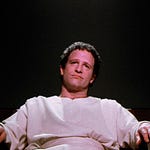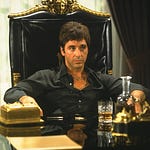This week I’m joined by Walt Hickey, the author of You Are What You Watch: How Movies and TV Affect Everything. Among the many topics discussed on this show: the surprisingly durable effect of Warner Bros.’s merchandising efforts aimed at adults; how identity and pop culture become hopelessly (and negatively) intertwined; and how violent movies can help stop violence from occurring. If you find this podcast interesting, I hope you check out Walt’s book; it has tons of charts (one of which is reproduced above) and many fascinating nuggets I simply did not have time to dig into with him today. And make sure to share this episode with a friend!
Share this post

How What We Watch Defines Us
www.thebulwark.com
How What We Watch Defines Us
Walt Hickey on 'You Are What You Watch' and how media shapes our identities.
Nov 04, 2023
Bulwark Goes to Hollywood
Audio
Sonny Bunch on movies, technology, and understanding the next Hollywood
Sonny Bunch on movies, technology, and understanding the next HollywoodListen on
Substack App
RSS Feed
Recent Episodes














How What We Watch Defines Us